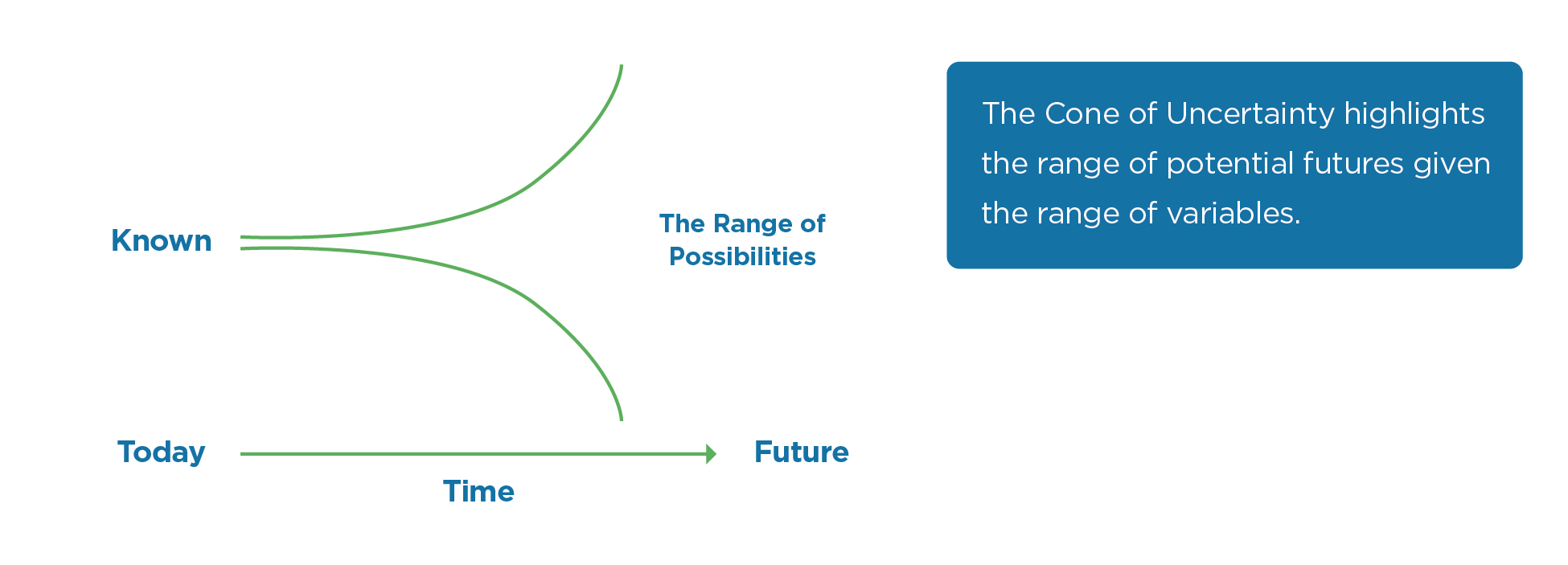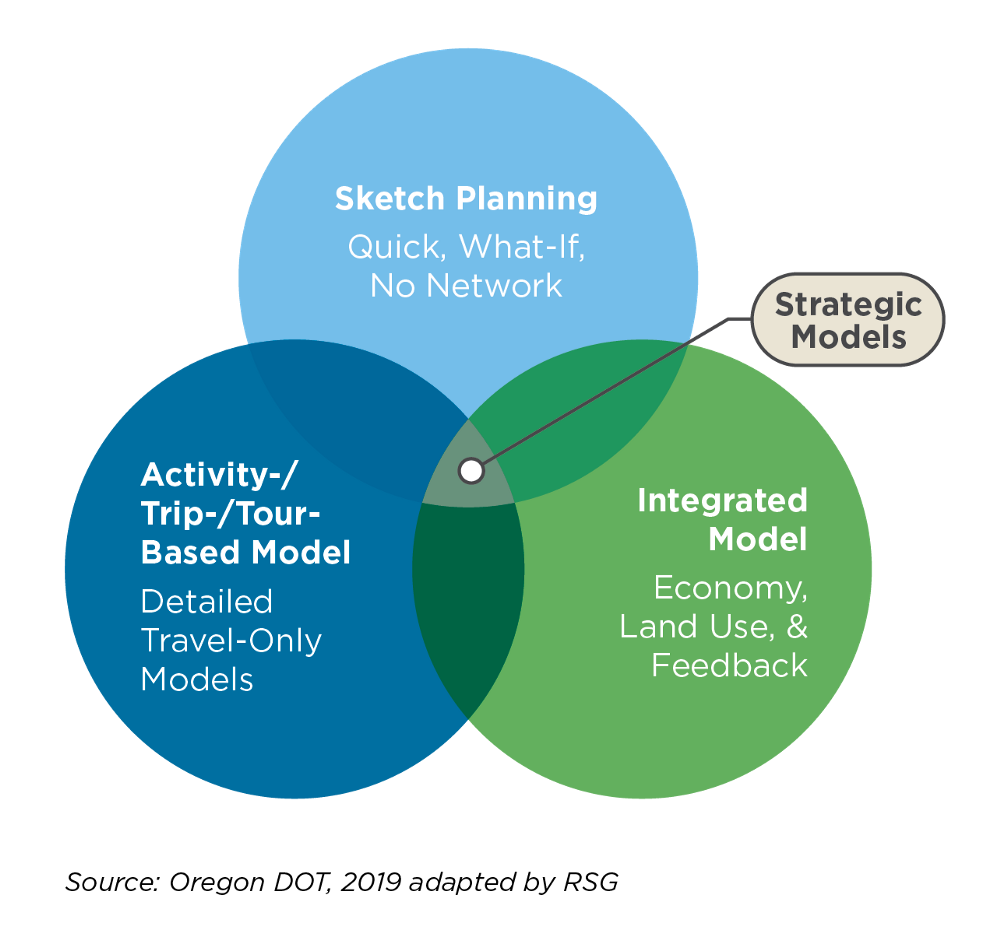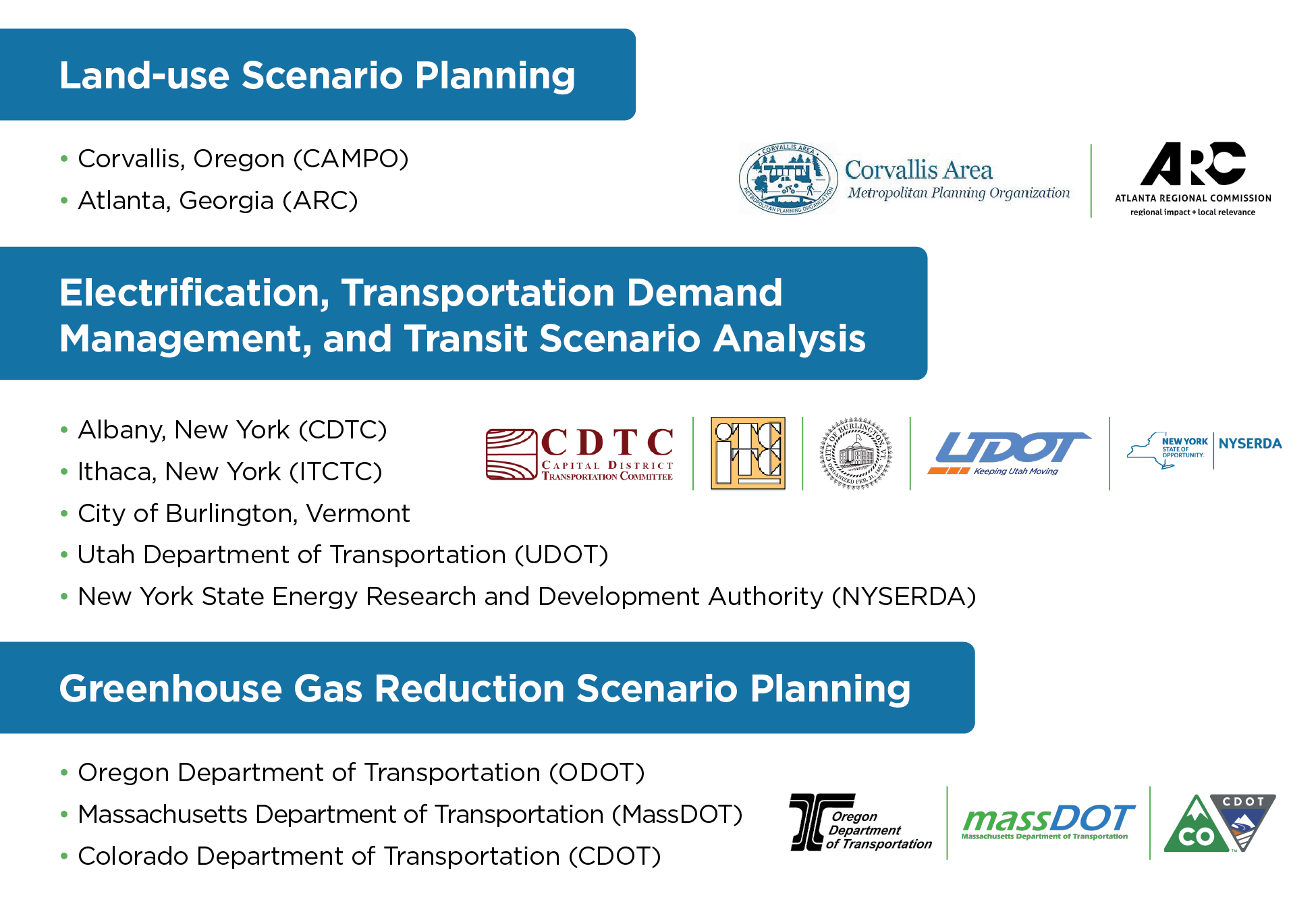Transportation impacts everything from emissions to equity. This expansive view of transportation was recently confirmed by the contours of the Biden administration’s infrastructure plan. Through its priorities, that plan acknowledges and seeks to address past discriminatory planning practices that divided communities of color and overlooked or downplayed the threat posed by climate change.
As part of a complex system, forecasting future transportation behaviors has always been challenging. Moreover, disruptive technological changes such as automated, connected, electric, and shared (ACES) mobility options have added even more uncertainty to these forecasts. In addition to advances in mobility technology, the COVID-19 pandemic has changed many traditional travel behaviors through teleworking and reduced use of some shared mobility services, which further complicates long-term forecasting efforts.
Scenario-planning tools can help practitioners anticipate and respond to these systemic changes, particularly as they relate to demographics, policy, and travel behaviors. Responding to expected changes, as well as emerging changes like those caused by the pandemic, requires planning tools that can help practitioners analyze the future based on a range of different assumptions to plot possible outcomes.
Ideally, these tools provide a framework for the evaluation of a range of risk and risk responses. Among the tools currently in use, strategic models combine speed and detail, both of which are key to forecasting the effects of changing technologies, cultural norms, and travel behaviors. Importantly, strategic models offer practitioners robust planning capabilities that would otherwise be inaccessible due to their cost or complexity.
Strategic model applications have grown in popularity as the tools mature and policy questions become more complex
The recent growth in strategic models’ use is a testament to their versatility at a time when rapid technological changes and climate change are challenging practitioners to think differently. When considering policy, strategic models are an invaluable tool. Here are just a few examples of how strategic models can help identify solutions in the policy space:
- Technology. Define characteristics/cost of the vehicle mix that includes standard internal combustion engine vehicles, hybrid-electric vehicles, and battery-electric vehicles.
- Emerging Modes. Account for new technologies like micromobility and automated ride-hailing modes.
- Alternative Fuels. Calculate the emissions and cost of electricity, compressed natural gas, and biodiesel—and the revenue changes in applicable fuel taxes.
- Land Use. Determine ripple effects of changes in housing and commercial land use.
- Pricing. Understand the impact of policies like a mileage-based user fee, a carbon tax, or parking and congestion fees.
- Equity. Model household demographics, income, and travel characteristics (e.g., travel demand, modes used, travel costs).
- Travel Demand Management. Evaluate implications of policy levers (e.g., mileage-based user fees and fuel taxes) that encourage people to drive less.
- Transportation Investment. Understand the effects of building roads, bike paths, and increasing the capacity of the transit system.
- Transportation Systems Management. Consider high-level effects of improvements to safety and congestion via signal timing and crash-reduction strategies.
- Freight. Assess how changes in model inputs such as demographics and land use affect demand for goods and, subsequently, fuel and emissions.
Because of strategic models’ strengths on the policy side, these tools are ideally suited to be applied early in the planning process to identify a range of possible futures or outcomes. This, in turn, can help planners understand individual policy effects and select those policies or investments with a high return on investment.

Understanding the range of possibilities within the “Cone of Uncertainty” is where strategic models excel.
This part of the planning process is called exploratory scenario planning (XSP), and it answers this question: What can happen? Grappling with a range of possibilities while understanding how each policy affects the transportation system is strategic modeling in a nutshell. Critically, strategic modeling allows us to gauge which of these possible futures we want to support and encourage versus which we want to mitigate and discourage through policy levers.
Strategic models fill a unique and important role in the scenario-planning toolkit
In terms of use and function, strategic models occupy a middle ground between sketch planning tools and complex integrated or network-based travel demand models. The components of strategic models have less interaction, or are more loosely coupled, than in an integrated model. Strategic models also require less precise data and more easily accommodate new policies and features. This makes them faster and more effective than integrated models at covering a broader range of factors to explore a larger decision space.

Based on RSG’s experience with strategic models, and the rising demand for this type of forecasting tool by more states and regions, we have worked on strategic model development projects in New Mexico, Colorado, and Massachusetts. These projects have addressed questions around land-use scenario planning, vehicle fleet electrification, transportation demand management, transit scenario analysis, and greenhouse gas reduction scenario planning, among others.

The scope and geographic breadth of strategic modeling applications has expanded in recent years. The above figure provides a select overview of recent projects. RSG led or was involved with all the above applications except for Corvallis, Oregon.
When FHWA began its VisionEval development project, which brought an array of state and regional strategic models under one open-source framework, RSG led the first phase of its development. We subsequently applied the resulting regional strategic model in both New York State’s capital district for the New York State Energy Research and Development Authority and in Burlington, Vermont, as part of that region’s net-zero energy plan. (A follow-up post will highlight some of the findings of these early applications of the tool.)
RSG is also working on several statewide strategic model application projects. These include work with the Oregon Department of Transportation on strategic model enhancements to forecast automated and shared rides. We are also assisting with strategic model applications (using VE-State) in New York and another application in Massachusetts for the state department of transportation as part of a telework study.

In one of our larger strategic modeling projects to date, RSG applied a statewide strategic model in New York.
The statewide projects are still underway, and findings have not yet been released. Over the coming months, we plan to share the insights obtained by applying these models.
Strategic models work as either a stand-alone tool or a tool to complement existing models
Strategic models occupy a unique niche within the large array of modeling tools. These models offer practitioners at state, regional, or local levels planning capabilities that are normally inaccessible or only possible with significant effort, investment, and expertise. Strategic models can also quickly and cost-effectively cover multiple policy inputs and community outcomes, including equity implications.
The ability of strategic models to flexibly and quickly run hundreds of scenarios makes them ideal for exploring uncertainty in the planning process. Importantly, when used as a stand-alone tool or in concert with an existing model, these tools bring unique clarity to the planning process and help narrow the range of policy choices based on desired outcomes.
Watch: Strategic Models in Action
Video Caption: RSG Director Jonathan Slason, PE, shows how strategic models can help understand the implications of policy on transportation outcomes.
Want to learn more? Visit rsginc.com/strategicmodels to discover how strategic models can help your organization plan for change.
This article is based on an RSG white paper, Forecasting Tools in a Time of Uncertainty and Disruption, which is available to view/download here.



